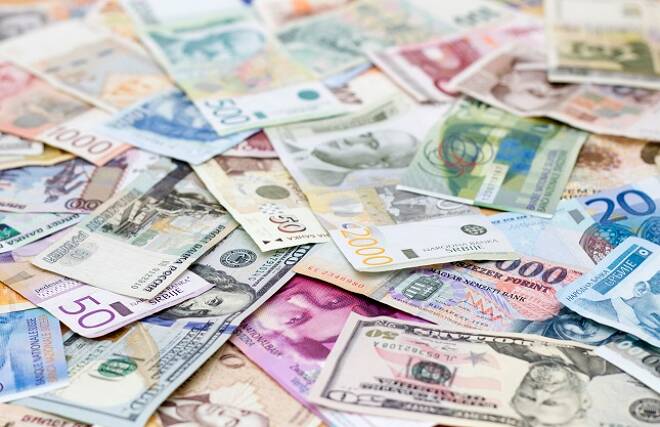Advertisement
Advertisement
Divergence Between Fed and ECB, BOJ Policies Drives Forex Volatility
By:
The Fed voted to raise its benchmark interest rate for a second time this year. The European Central Bank (ECB) revealed its plan to exit from quantitative easing (QE), but also said it’s not likely to raise interest rates until July 2019. The BOJ voted to maintain its ultra-loose monetary policy and downgraded its view on inflation, signaling that it will lag well behind its U.S. and European peers in rolling back crisis-era stimulus
The U.S. Dollar was the big winner last week, helped by the divergence between the hawkish monetary policy of the U.S. Federal Reserve and the dovish European Central Bank and Bank of Japan.
U.S. Federal Reserve
In a widely expected decision on Wednesday, the Fed voted to raise its benchmark interest rate for a second time this year. Additionally, in a less unanimous decision, the central bank strongly hinted at another two increases this year. The U.S. Fed Funds rate moved to 1.75 percent to 2.00 percent on the decision.
In an unusually short statement, the Federal Open Market Committee changed multiple phrases from its previous statements, pointing to a more optimistic view on economic growth and higher inflation expectations.
Among the changes, the FOMC said economic growth has been “rising at a solid rate,” an upgrade from “moderate” in May. The unemployment rate has “declined,” as opposed to “stayed low,” and household spending “has picked up,” an upgrade from “moderated.”
The Fed also indicated in the update to their quarterly economic forecast that they expected core inflation to reach the Fed’s 2 percent target by the end of the year, and now see economic growth hitting 2.8 percent for the full year. Committee members also cut their forecast for unemployment to 3.6 percent by the end of the year.
European Central Bank
On Thursday, the Euro broke sharply after the European Central Bank (ECB) revealed its plan to exit from quantitative easing (QE), but also said it’s not likely to raise interest rates until July 2019.
The ECB also said that from September the pace of bond buying will fall from 30 billion Euros ($34 billion) to 15 billion Euros. The figure then falls to zero in December 2018.
Last week’s 1.37% plunge in the EUR/USD was primarily fueled by the statement from the bank’s governing council that key ECB rates are to remain at their present levels “at least through the summer of 2019”.
Finally, in its statement, the ECB added that rates would stay subdued as long as necessary to ensure Euro Zone inflation remains on path to hit the central bank’s target of just below 2 percent.
Bank of Japan
The USD/JPY rose 1.03% last week, primarily helped by the widening of the spread between U.S. Government Bonds and Japanese Government Bonds. The movement in the yields reflects the divergence between the hawkish Fed and the dovish BOJ.
On Friday, the BOJ voted to maintain its ultra-loose monetary policy and downgraded its view on inflation, signaling that it will lag well behind its U.S. and European peers in rolling back crisis-era stimulus
The Bank of Japan kept its short-term interest rate target at minus 0.1 percent and a pledge to guide 10-year government bond yields around zero percent. As far as inflation is concerned, “Consumer price growth is in a range of 0.5 to 1 percent,” the BOJ said in a statement accompanying the decision.
About the Author
James Hyerczykauthor
James Hyerczyk is a U.S. based seasoned technical analyst and educator with over 40 years of experience in market analysis and trading, specializing in chart patterns and price movement. He is the author of two books on technical analysis and has a background in both futures and stock markets.
Did you find this article useful?
Latest news and analysis
Advertisement
